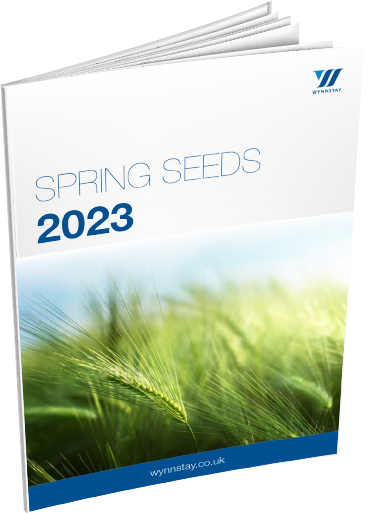The beauty of wholecrop cereals is they can be cut at different percentages of dry matter - depending on your requirements. Ecosyl silage specialist, Peter Smith, outlines how the high yielding crop can be handled. Below you will discover the variations of wholecrop silage when harvested at different Dry Matter percentages.
Harvesting at 30-40% DM
If grass yields are low, e.g. due to dry weather, then cereals can be harvested at around 30-40% DM.
This will give the maximum amount of fresh weight tonnage (although not DM tonnage). Spring cereals will yield around 9-10t/ac, while autumn-sown crops will yield 10-12t/ac. It can also be harvested without 'specialist equipment', such as grain processors. Instead, it can simply be mown before harvest without the conditioner turned on, or directly cut with a wholecrop header.
Typically, wholecrop harvested at this %DM is lower in starch and fed to dry cows and young stock.
Harvesting at 40-50% DM
A more usual range for harvested cereals is 40-50% DM. This offers a similar yield to earlier-cut silage but a better starch level for improved animal production.
However, because the crop is drier, it becomes even more difficult to keep aerobically stable (characterised by silage heating up). Consequently, the right type of additive becomes even more important to keep it cool. Placing 2-3ft of fresh grass on top of the freshly-harvested wholecrop in the clamp will also help.
Machinery-wise, mowing the crop is not an option at this percentage DM as it can cause loss of grains. Instead, the crop should be harvested with a wholecrop header. If harvested above about 45% DM, a processor may also be needed to crack the grains to prevent them passing straight through the animal. As an exception if the crop is undersown, it can increase the moisture in the silage and soften the grains.
Harvesting at 50-55% DM
Where bulk is not an issue, harvesting at 50-55% DM will increase starch levels further. It will also increase the 'scratch factor' in the diet. This is useful with higher production animals, especially if other forages are low in fibre.
However, because the crop is now even drier, consolidation becomes an even greater challenge. It is recommended that clamps should always be filled in thin layers (10-15cm). But at this dry matter, this becomes even more critical, to avoid 'pockets' of heating and mould. Again, a layer of grass over the top is good practice, and an additive to reduce heating is vital.
A processor will also be needed on the harvester to crack the grains. Fresh weight will be around 8-10t/ac, depending on whether you have spring or winter cereal crops.
Conclusion
Wholecrop cereals are extremely useful, but also very prone to aerobic spoilage (heating). Accordingly, standards of clamp management and treatment at ensiling and feed out must be high.
Proven additives such as DA Ecocorn and Ecocool along with Wynnstay HiDri have been shown to help clamps stay cool and aid good fermentation. The beneficial bacteria in each of these are also shown to improve animal performance. Wynnstay Corn controls clamp heating.
Read more: What is aerobic spoilage and how can we minimise it?













